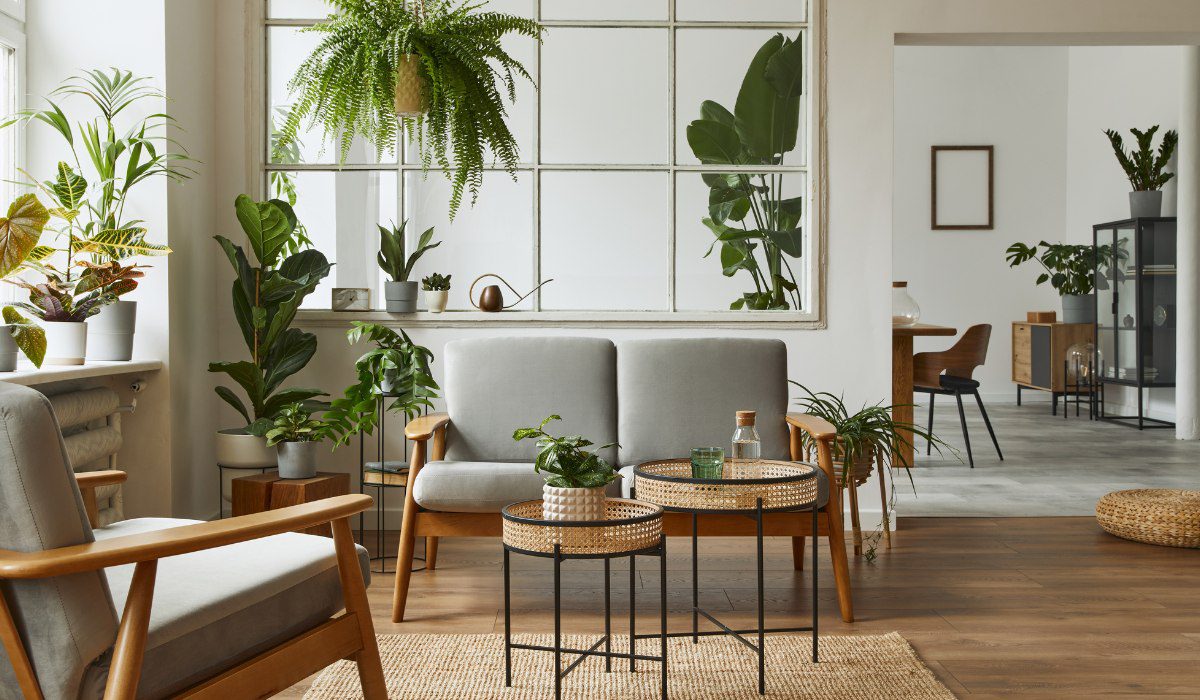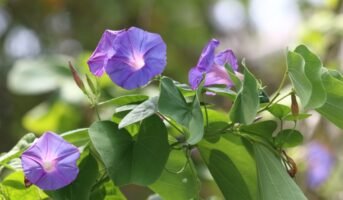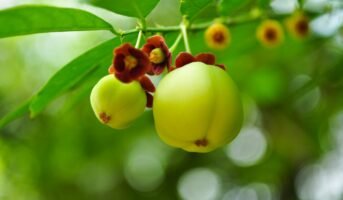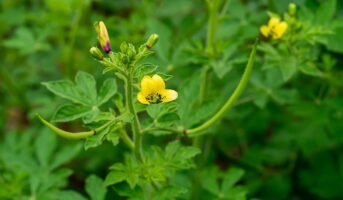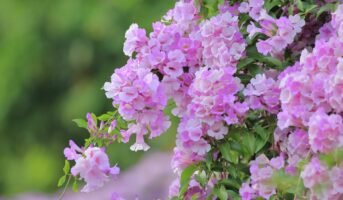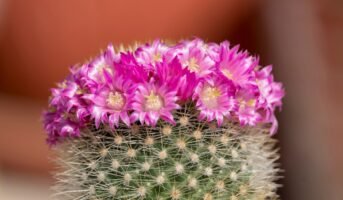A green atmosphere brings positivity and tranquillity into your home. And who doesn’t appreciate that? The scent of grass and blossoms is both comforting to the eyes and relaxing to the mind.
City dwellers can find a happy medium by transforming their residences into indoor gardens, complete with a variety of low-maintenance indoor flowering plants and shrubs.
See also: All about Shrubs Plants
Low-maintenance indoor flowering plants for your home
Check out this list of lovely indoor flowering plants that can be easily grown and maintained in your home.
Indoor flowering plants #1: Peace lily
When it relates to indoor plants, the peace lily is a perfect idea. Simply place it in the corner of your residence and allow its catamaran, gorgeous white flowers and shiny foliage to perk up your living space. It is an air movement cleanser and can neutralise toxic air in the room, furthermore to its breathtaking appearance. The peace lily is the simplest to care for. It can withstand your abandonment and even tell you when it’s dehydrated – just watch how it droops. The peace lily is resistant to drought, so you only need to water it once a week. To keep the roots healthy, make sure the soil tends to dry before the next watering. Peace lilies thrive in both partial and complete shade.

Source: Pinterest
Indoor flowering plants #2: Kalanchoe
Kalanchoe is a succulent that blooms. Its clustered flowers, which come in a variety of colours, can blossom for numerous weeks. With proper care, you can appreciate its bright, pretty flowers for many years.
Kalanchoe, as a succulent, despises wet soil. Plant it in well-drained soil and avoid overwatering. It takes six a week of 12-14 hours of darkness for your kalanchoe to create flower buds. After that, place the plant in partial heat or light shade to allow its delightful moonlit flowers to bloom.

Source: Pinterest
See Also: How to grow Chinese Okra indoors?
Indoor flowering plants #3: Anthurium
Anthurium is the plant that blooms the longest. Its “flowers,” which are spathes in stunning red, pink, white, and purple, can last for several months in your home. The dark green leaves of anthurium, like those of peace lilies, can help to purify indoor air.
Due to its ease of care, anthurium remains one of the top indoor flowers for beginners. It requires plant roots to grow as an epiphyte. This plant thrives in soil that is rich in moss and coco coir.
Anthurium roots rot easily, so make sure that the first inch of soil is clean before watering again. Moving your plant to a bright spot with sunlight will recompense you with a plethora of large flowers.

Source: Pinterest
See also Know about: Moon Flower
Indoor flowering plants #4: Christmas cactus
Christmas cactus, unlike its desert relatives, does not prefer dry conditions. Watering on a regular basis and maintaining the soil mildly moist is, therefore, essential. It likes a lot of sunlight, but it is best to avoid direct sunlight because it can burn the leaves.
Since the Christmas cactus prefers humidity, you can keep it in your restroom, house, or on a plate of specks. Encompass your pot plant during the day six weeks before flowering to allow it to theorise flower buds.

Source: Pinterest
See also: Tips to grow and take care of anthurium
Indoor flowering plants #5: Amaryllis
Amaryllis is an excellent choice for beginners who enjoy flower initiation bulbs and trumpet-like flowers. Amaryllis is a popular indoor plant because it is the easiest to develop among the bulbs and has stunning flowers. Don’t use garden soil to make planting easier. Instead, purchase the nutritious potting mixture.
Amaryllis loves the sun and must receive overall 6 hours of direct sunlight to produce large flowers. Water on a regular basis, but avoid wetting the bulb above the soil. After the first bloom, remove faded flowers and trim sagging stems to the pinnacle of the bulb. Then, place your bulb in a dark place for 6-8 weeks to prepare it for the season.

Source: Pinterest
Indoor flowering plants #6: Orchids
Orchids are one of the most popular indoor flowering plants, known for their exquisite blooms and exotic beauty. With thousands of species and hybrids, orchids come in a wide range of colours, shapes, and sizes. They are typically low-maintenance and easy to care for, making them ideal for indoor growing.
Taking care of orchids indoors requires a bit of attention and care. The ideal conditions for orchids include bright, indirect light and high humidity. They should be regularly watered, but not over-watering should be avoided as orchids are susceptible to root rot. Fertiliser should be applied once a month during the growing season, and the plant should be repotted every one to two years.
Orchids can be grown in a variety of indoor settings, including windowsills, terrariums, and hanging baskets. They can also be grown in various types of potting media, including bark, sphagnum moss, and perlite. With proper care and attention, orchids can bloom for several weeks or even months, adding a touch of elegance to your space.
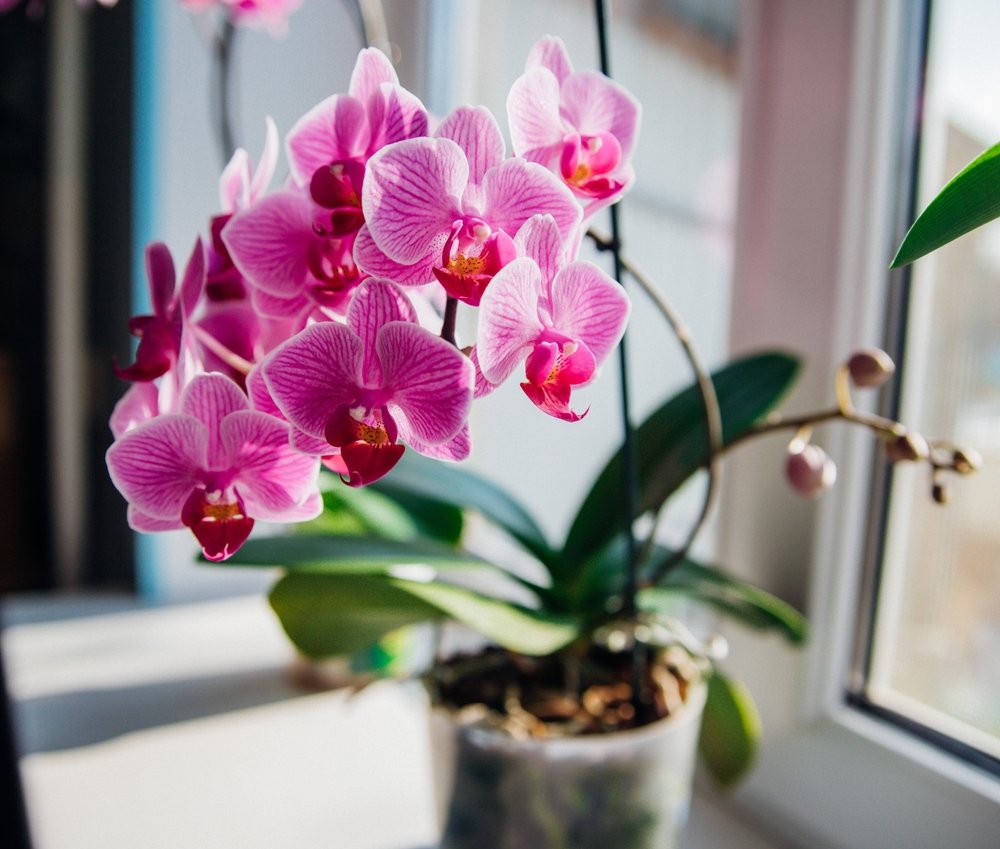
Source: Shutterstock
Indoor flowering plants #7: Hibiscus
Hibiscus is a popular indoor flowering plant known for its vibrant and showy flowers. This plant comes in a variety of colours, including pink, red, white, and yellow, making it a great addition to any indoor space. The hibiscus plant requires a bit of attention and care to thrive indoors.
To care for hibiscus indoors, it is important to provide it with bright, indirect sunlight and regular watering. Make sure to keep the soil moist. But avoid making it waterlogged as this can cause root rot. Hibiscus plants also benefit from regular fertilisation during the growing season, which should be done once every two weeks with a balanced fertiliser.
Ideal indoor conditions for hibiscus include warm temperatures between 60 and 90 degrees Fahrenheit, and high humidity levels. Misting the leaves or placing a humidifier nearby can help maintain the plant’s moisture levels. Hibiscus plants can be pruned to maintain their shape and promote bushier growth, but should not be pruned heavily as this can damage the plant.
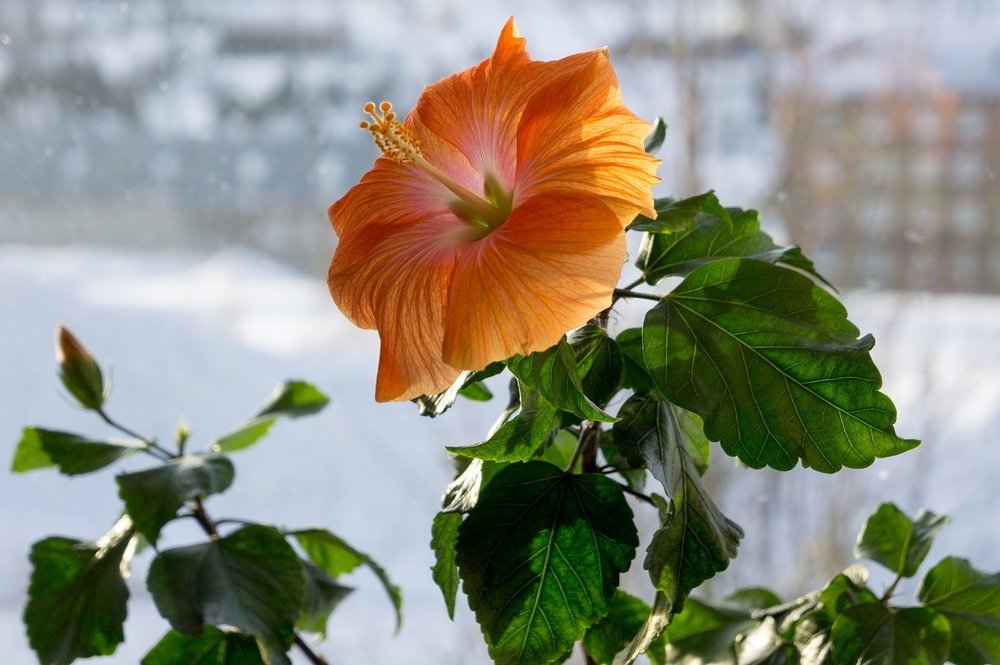
Source: Shutterstock
Indoor flowering plants #8: Begonia
Begonias are a beautiful indoor flowering plant that flaunt vibrant blooms and attractive foliage. They come in a variety of colours, including pink, red, orange, and white. To care for begonias indoors, it is important to provide them with bright, indirect sunlight and well-draining soil. Begonias prefer consistently moist soil, but overwatering can lead to root rot. They should be watered when the top inch of soil feels dry to the touch. A well-balanced fertiliser can be applied every two weeks during the growing season.
Ideal indoor conditions for begonias include temperatures between 65 and 75 degrees Fahrenheit and moderate humidity levels. These plants prefer a humid environment but can also thrive in drier conditions with proper care. Begonias benefit from regular pruning to maintain their shape and promote bushier growth. With the right care and attention, begonias can bloom year-round.
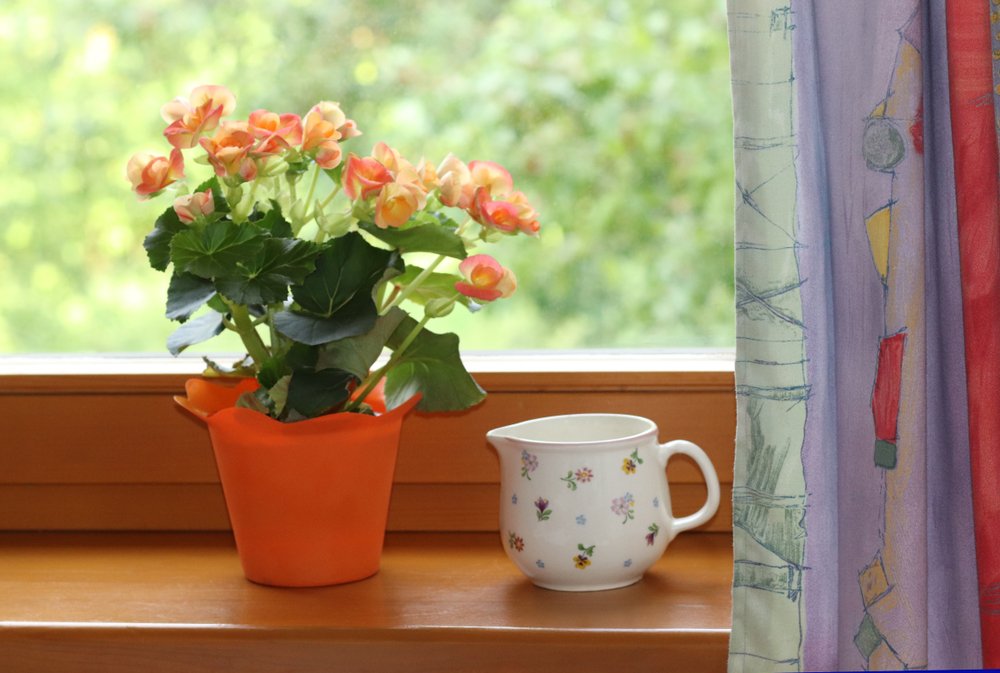
Source: Shutterstock
Indoor flowering plants #9: Hoya Carnosa
Hoya Carnosa, also known as wax plant or porcelain flower, is a lovely indoor flowering plant with waxy, star-shaped flowers and vining growth habit. It is a low-maintenance plant that can readily thrive in indoor conditions. To care for Hoya Carnosa indoors, it is important to provide it with bright, indirect sunlight and well-draining soil. These plants can tolerate lower light conditions, but may not bloom as much in those conditions. Watering should be done when the top inch of soil feels dry to the touch. These plants prefer slightly drier soil compared to other indoor plants.
Ideal indoor conditions for Hoya Carnosa include temperatures between 60 and 80 degrees Fahrenheit and moderate to high humidity levels. They can tolerate lower humidity levels, but may benefit from occasional misting. A well-balanced fertiliser can be applied every four to six weeks during the growing season. Hoya Carnosa is a slow-growing plant that can take several years to bloom. Once it does bloom, the flowers can last for several weeks. It can also be trained to climb or trail along a trellis or hanging basket for added visual interest.
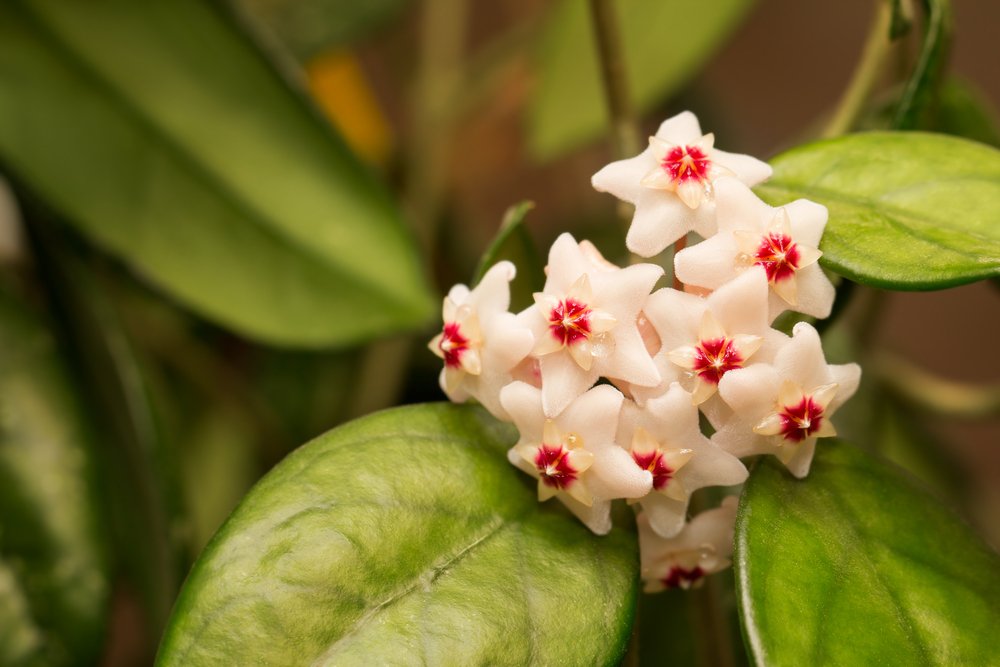
Source: Shutterstock
How to take care of indoor flowering plants?
- Regularly water your plants. Plants prefer water that is at room temperature. The optimal temperature for the water you use to hydrate your plants is 68 degrees Fahrenheit (20 degrees Celsius).
- Maintain soil moisture. It’s fine if the soil has moisture. If the soil feels dry, you should water the plant. The amount of water required by each plant varies.
- The plant’s growth can be hampered if the soil is either too dry or overwatered. Overhydration is indicated by discoloured leaves, a lack of leaf growth, leaf loss, and soft rotten patches.
- In some cases, less or underwatering the plant also ruins it. Plants with lush, thick leaves require more water than those with waxy or leathery leaves. Slow leaf growth, brown and dehydrated leaf edges, and lower leaves turning yellow and curled indicate dehydration.
- Water the plant when the soil becomes lighter or appears cracked.
- Plants can be killed by standing water. If there is stagnant water in or beneath the pot, drain it.
Indoor flowering plants: Benefits
- Boosting your mood
- Fatigue reduction
- Stress and anxiety reduction
- Getting better office performance and concentration
- Increasing pain tolerance and healing
- Reducing the frequency of headaches by enhancing the air quality
- Relieving skin problems and respiratory problems caused by dry air
FAQs
Which plant blooms for 12 months?
When discussing 12-month full-bloom flowers in India, the South Indian elegance recognised as Crossandra must be mentioned. Because they grow in bright colours like red and yellow, these fierce-looking flowers are also known as firecracker flowers.
What is the simplest flowering indoor plant to cultivate?
African violets are one of the simplest flowering houseplants to grow and will bloom a few times each year with little effort from you. They are available in hundreds of different varieties, some of which have crepe myrtle foliage or ruffled as well as white-edged blooms.
Housing News Desk is the news desk of leading online real estate portal, Housing.com. Housing News Desk focuses on a variety of topics such as real estate laws, taxes, current news, property trends, home loans, rentals, décor, green homes, home improvement, etc. The main objective of the news desk, is to cover the real estate sector from the perspective of providing information that is useful to the end-user.
Facebook: https://www.facebook.com/housing.com/
Twitter: https://twitter.com/Housing
Email: [email protected]
